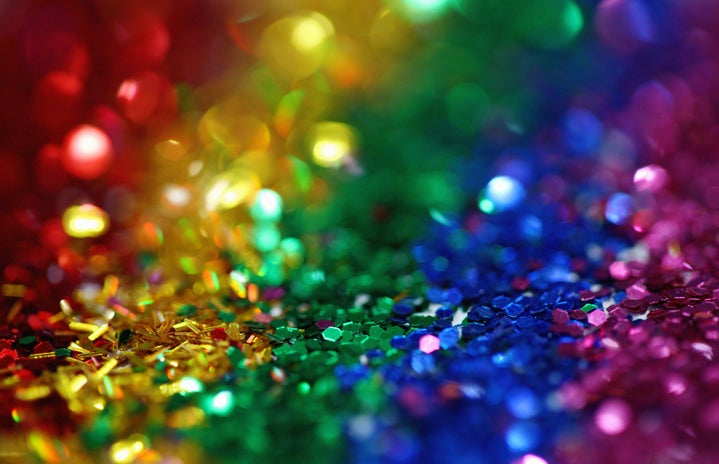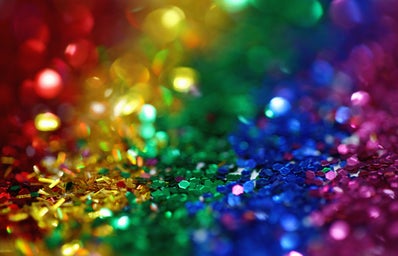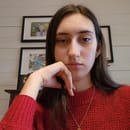One day when I was scrolling through Instagram, I came across a post that really interested me. It centered around a topic I had never heard of before: armocromia, or “color typing.” Color typing is the art of determining clothing colors that work best with one’s skin, hair, and eye colors. It captivated me, and two years later, I’ve learned a lot about it (even though I was never a fan of fashion before). Nowadays, color typing filters have been going viral on Tiktok and color analysts charge hundreds of dollars for a session. But all of this begs the question: does armocromia have any real benefit? I’m going to break down several color typing theories in an attempt to answer this very question.
The first and simplest form of color typing is the “season” color typing. This system divides people into four categories based on the four seasons: spring, summer, autumn, and winter. It was popularized by Carole Jackson in her 1981 book Color Me Beautiful. The book was a major hit, remaining on the New York Times bestseller list for seven years. This system focuses on cool and warm undertones in a person’s hair, eyes, and skin. For example, if you look at your arm and see green-colored veins, this means you are warm-toned. If there are blue-colored veins, you are cool-toned. The color palette of a spring consists of warm and bright colors like ivory, orange-red, and sky blue. The color palette of a summer is cool and soft, containing colors like periwinkle, mauve, and plum. Mahogany, mustard, and turquoise are some of the rich and warm colors of the autumn palette. Finally, the cool and bold colors of the winter palette include black, true green, and magenta.
In my opinion, this is the most accessible form of color typing. The Color Me Beautiful website has a free color season quiz (for the record, according to this quiz, I’m an autumn). They also sell two online color typing options that cost under $100. Unfortunately, the main drawback is that this system is a little bit rigid. Not all the colors in these small palettes will fit everyone’s complexion.
As a result, the season color typing system has expanded to include three sub-types within each season. These sub-types are based on the contrast of a person’s features and how saturated those features are. This is obviously a much more complicated way of finding your color season, but it does narrow down one’s color palette to be more specific. The palettes also vary substantially. The “light summer” palette looks completely different from a “soft summer” palette. Using this system, a person can find more accurate colors to harmonize with their hair, eyes, and skin. Unfortunately, the 12-season color typing system’s complexity makes it more inaccessible. It’s hard to figure out the “saturation” and “contrast” of your features if you’re not a color expert and it requires a lot of practice.
Finally, we move on to the most complex system: David Zyla’s Color Your Style system. Zyla’s system involves taking shades from one’s skin, hair, and eyes and wearing those shades as your “colors.” For example, the “dramatic” color is a person’s version of blue, and is drawn from the color of their veins. Zyla also believes that each color has a certain connotation and should be worn in specific circumstances. The dramatic color, for instance, should be worn when you want to appear confident and powerful. Once you find your colors, you are able to find your season. Zyla’s color seasons bring people’s inner characteristics into the mix. Instead of four or 12 seasons, Zyla has 24 seasons and corresponding archetypes. Some of his archetypes include “The Classic Beauty,” “The Maverick,” and “The Sexy Librarian.”
I think that Zyla’s system is the most inaccessible color typing system there is. The idea of drawing shades from someone’s features is very complicated and time-consuming. In his book Color Your Style, there is a long list of shades that could potentially be someone’s dramatic color, from frosted wintergreen to aqua. However, the book provides no examples of any of these shades and leaves the reader to figure out these colors. It seems that the only way to definitively find your season is to book a consultation with Zyla himself. This just exposes another problem with Zyla’s system, as the session for finding your custom color palette costs $950! This service is complicated and expensive which, to me, makes it a terrible option for the casual fashion aficionado who is just trying to find their best colors.
Even after doing all this research, I still don’t know what color season I am. I probably fall somewhere in the autumn/winter color palettes, but I don’t know for sure. As I’ve learned more about color typing, the more I’ve realized that it’s something that I personally do not need. I know what colors I feel best in and what colors I don’t like wearing. To me, wearing what I love is way more important than what I should be wearing. Color typing is a style trend that has helped many people, but I don’t know if I’m one of them. If I ever get color typed professionally, I’m going to do my research, find someone who charges reasonable prices, and not take it too seriously.
And I certainly won’t be getting typed by David Zyla.


